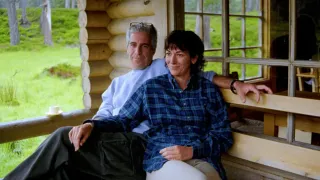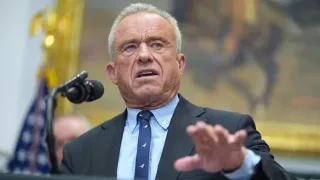September 4, 2015
Steve Jobs: The Man In The Machine
Karin McKie READ TIME: 3 MIN.
Alex Gibney's documentary "Steve Jobs: The Man in the Machine," primarily scored by the entrepreneur's favorite troubadour Bob Dylan, shows its cards with the subtitle: "Bold. Brilliant. Brutal."
Oscar-winner Gibney is adept at personalizing his films, and he set out to discover why there was a "global wake," with the hash tag "iSad," when Jobs died of pancreatic cancer at age 56 in 2011.
As with his Lance Armstrong doc, Gibney begins this movie with his own admiration of the man and his brand, his love of Pixar's "Wall-E" and his iPhone. Then he shares that Jobs was as precocious child, working on early computers at NASA, yet grappling with abandonment issues about being adopted.
In his teens, Jobs met Steve Wozniak, and, with a hundred bucks worth of parts, they built their first computer, then the Apple company, "a 30-year sitcom," which would eventually "influence and control the world" as the "cornerstone of the American economy."
Jobs "only had one speed - full on," and his self-serving nature - perhaps what put the "I" in front of all his product names - first emerged when he paid Woz $350 instead of $3,500 for an Atari board they built together.
He likened his work to that of an artist, signing the inside of early machines, then devising a marketing spin that the "computer is an extension of self, created and sold as something intimate," which would propel Apple into the largest company in the world by promoting the paradox that the computer "wasn't just for you, it WAS you."
"One of Steve's greatest accomplishments was that he attached emotion to a business," says one.
The pitch for personal computers, a term Jobs coined, was that they were quasi-human, "warm in your hand, they sing to you when you're alone, they are caressed."
Meantime, Jobs manipulated his employees - whom he considered "real" family while he had to be sued for abandoning his real, out-of-wedlock daughter Lisa (he was worth $200 million at the time; he also named his first computer Lisa) - by "seducing, vilifying and ignoring." An interviewee notes that Jobs' technology connected the world, but he himself couldn't connect.
Like the excellent new journalist he is, inserting his own questions into biographical material, Gibney eventually reveals the mayhem behind the myth by revealing the Zen-seeking Jobs' lack of philanthropy - "giving away money is a waste of time," he's quoted as saying - his secret "no recruitment" email deals with other Silicon Valley tech giants, his fraudulent backdated stock offers, his downplaying of worker suicides and water pollution at Apple's Chinese manufacturing plants, his hiding of nontaxable billions in ghost Irish companies, his violent bullying (via the React Task Force) of the Gizmodo reporter who leaked a lost phone prototype, to his baldfaced lying about his health in a 2005 Stanford commencement speech.
"As his devices got stronger, he got weaker," says Gibney, who, even after exposing Jobs' many foibles, still says "my hand is drawn to the iPhone in my pocket like Frodo is drawn to the Ring." And, just like the Fellowship narrative, Jobs enduring tool of connection is inevitably isolating, making his legions of disciples "alone together."
"Steve Jobs: The Man in the Machine" will be in theaters, on demand and, of course, iTunes on September 4 - information at http://www.magpictures.com/stevejobsthemaninthemachine/






